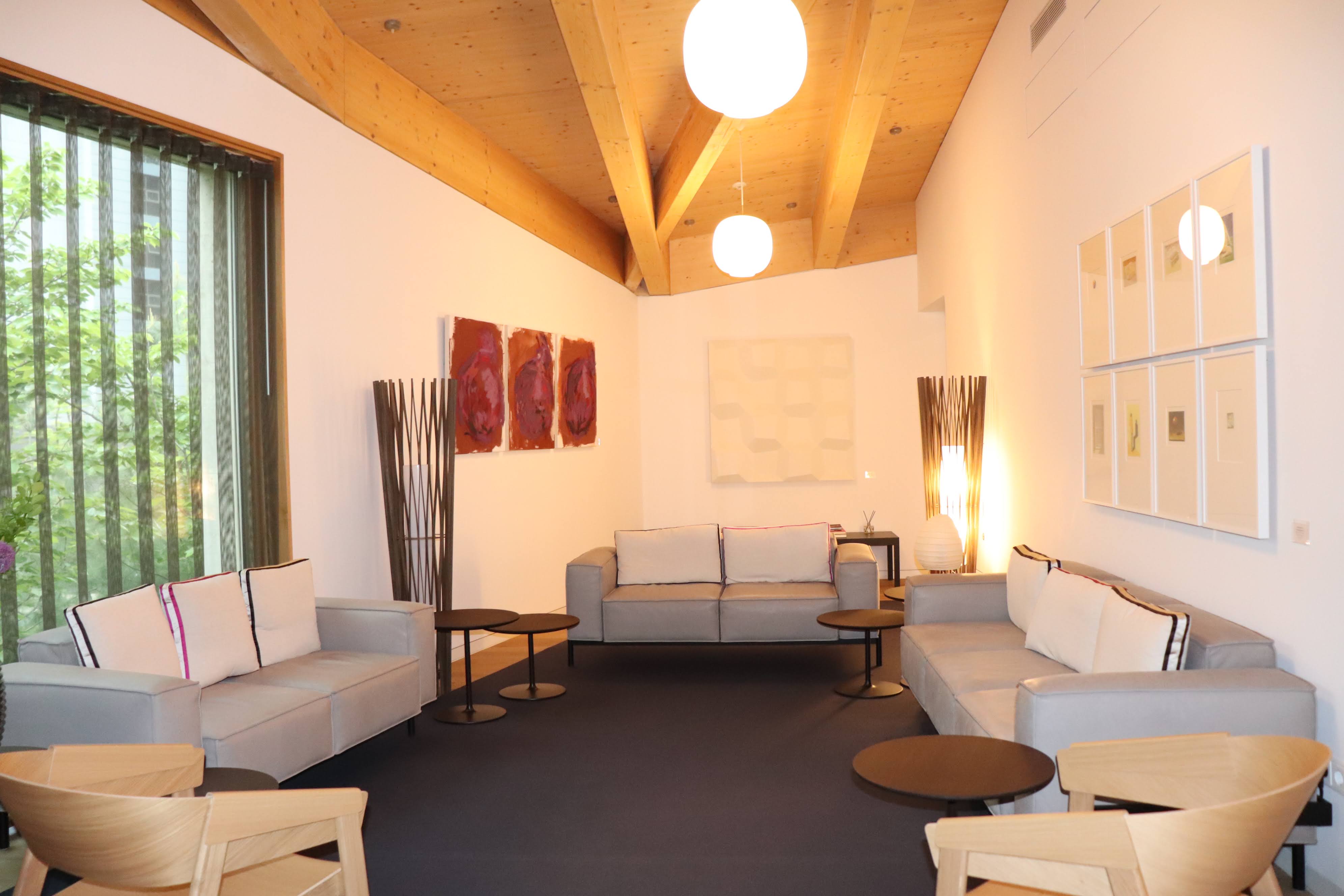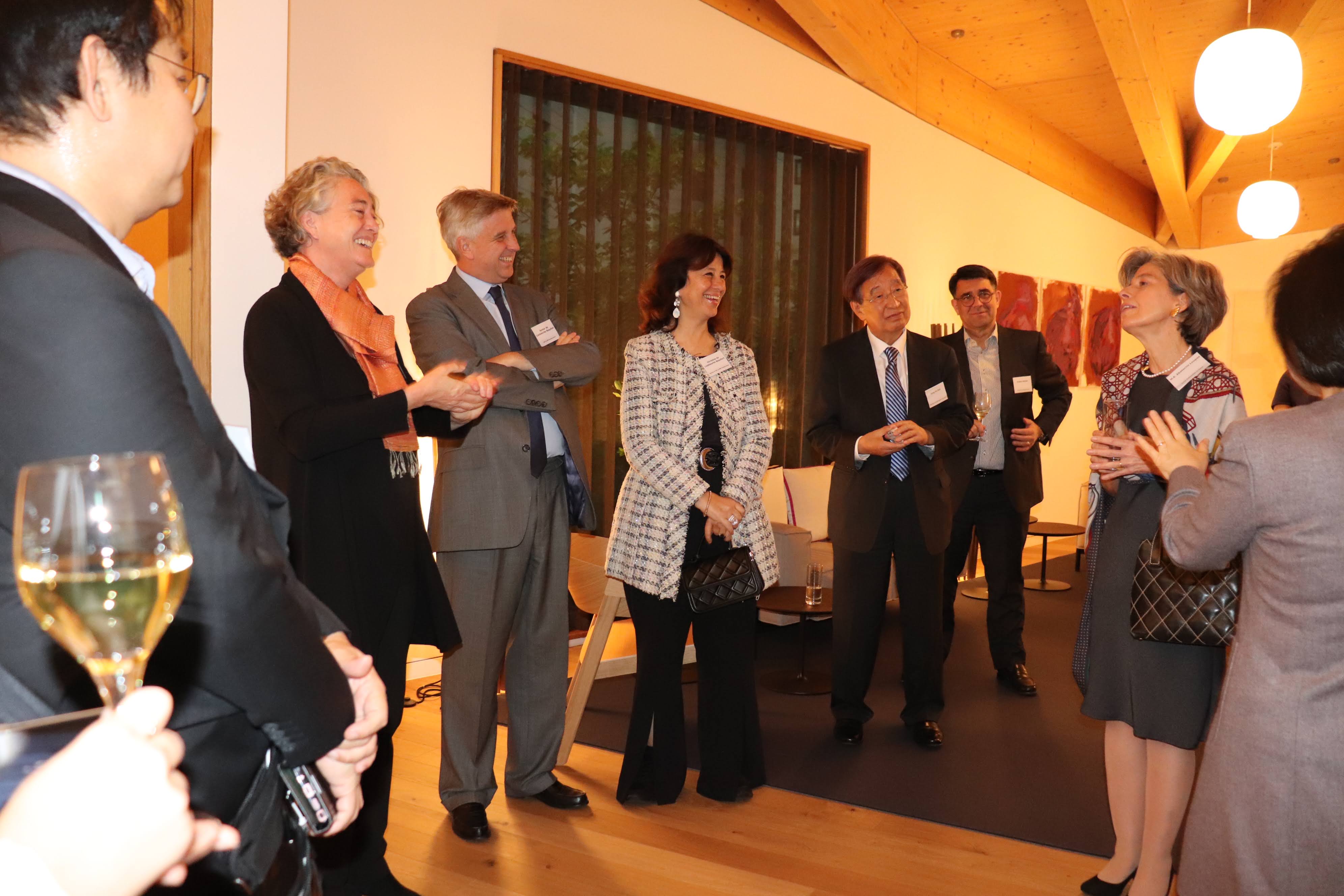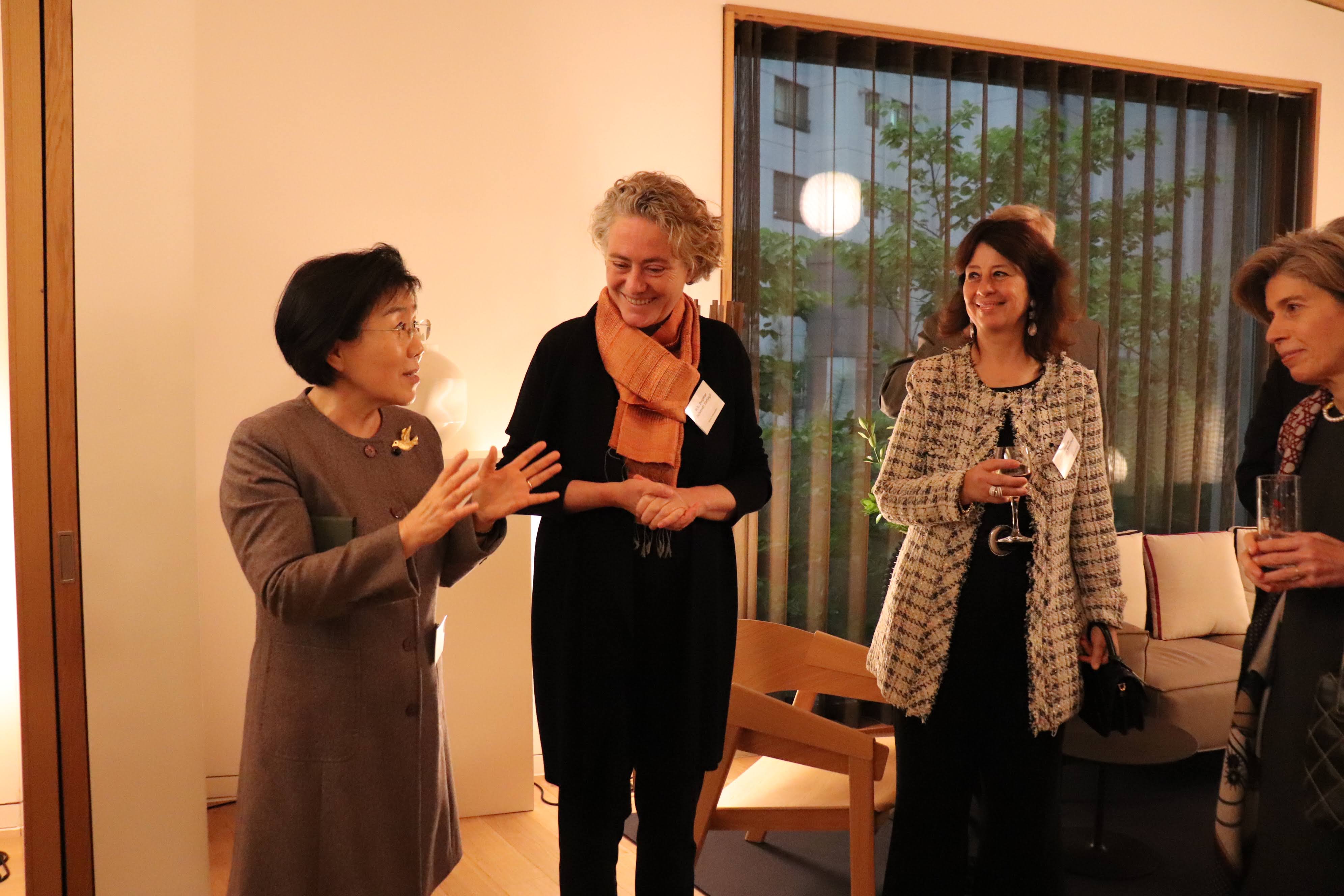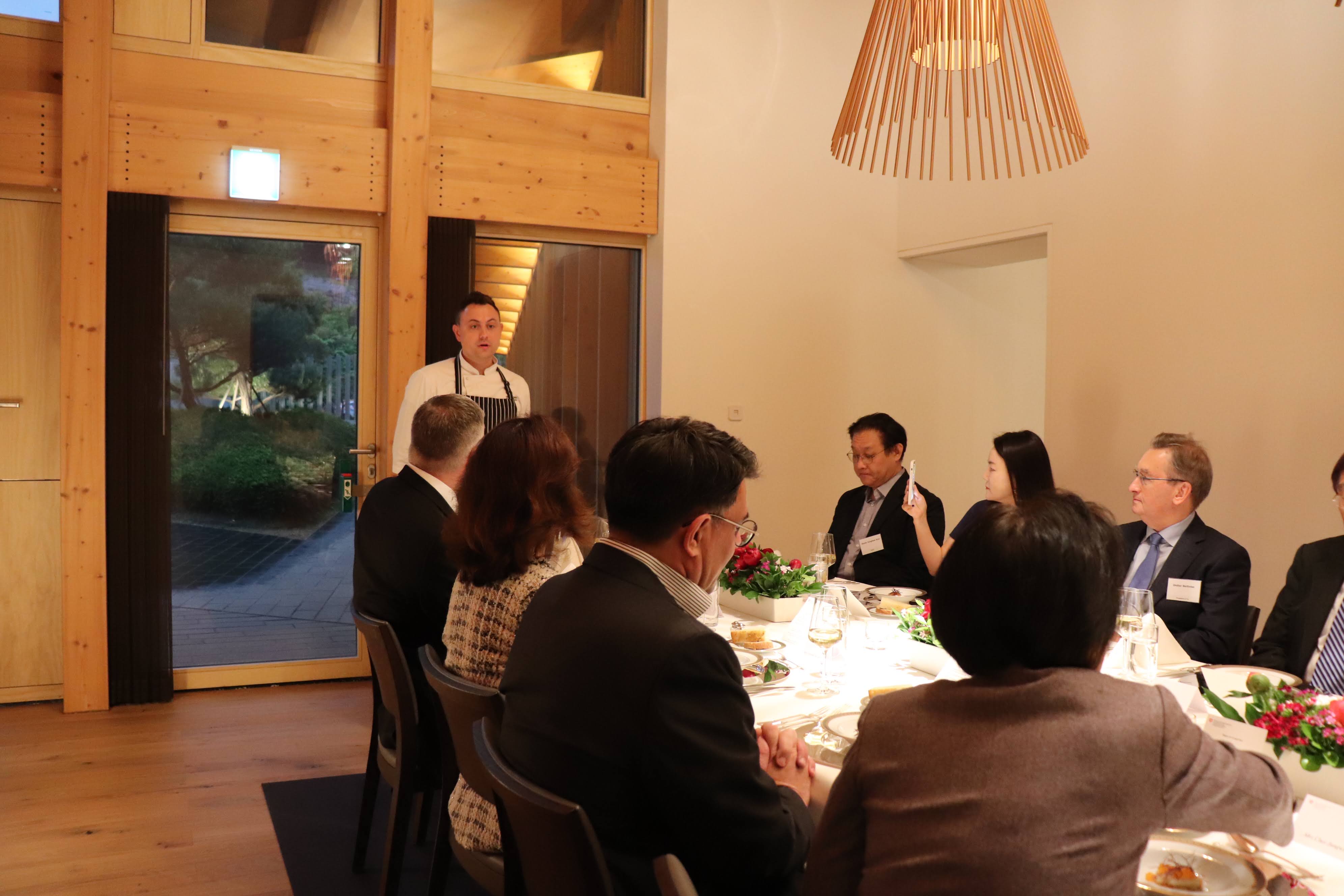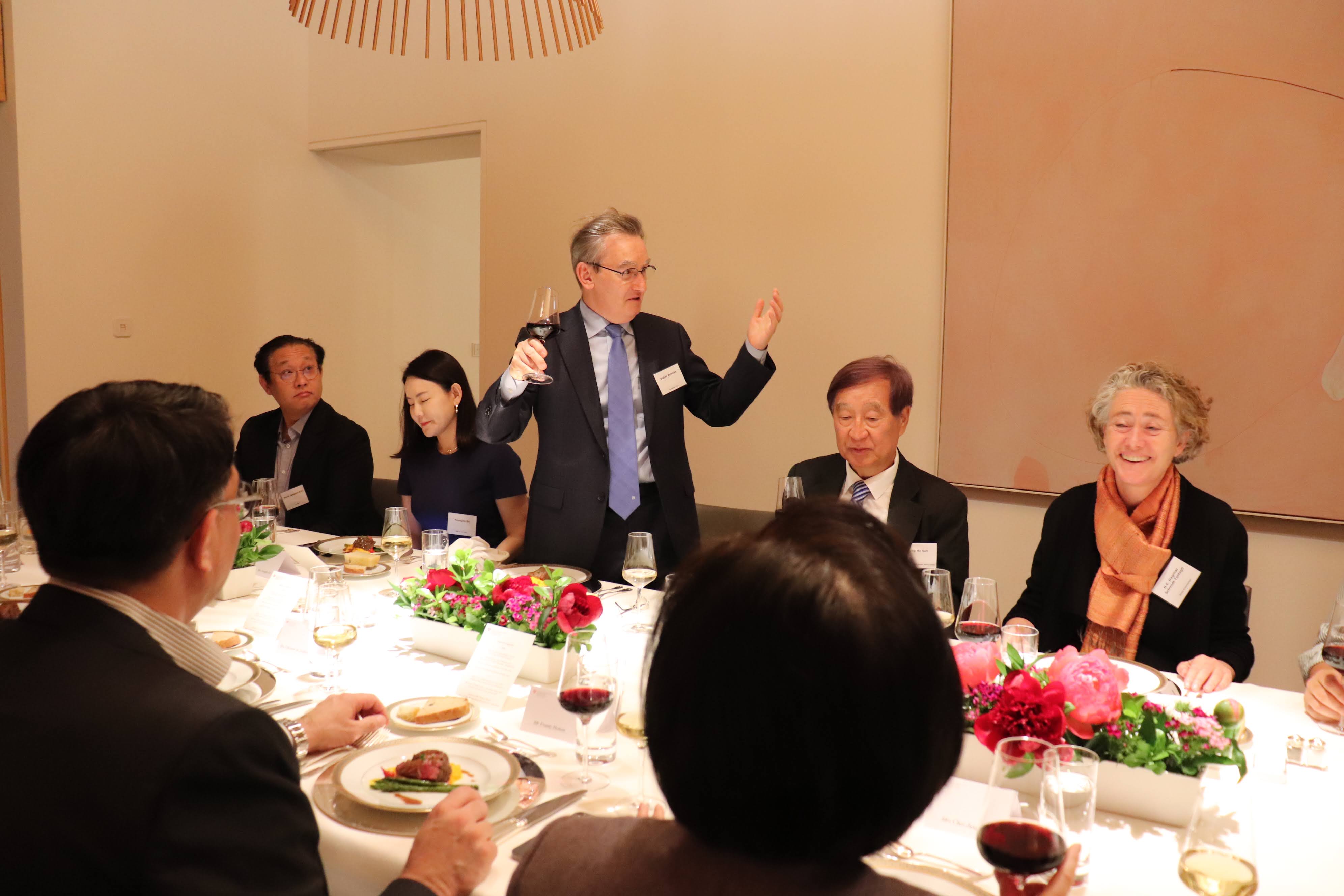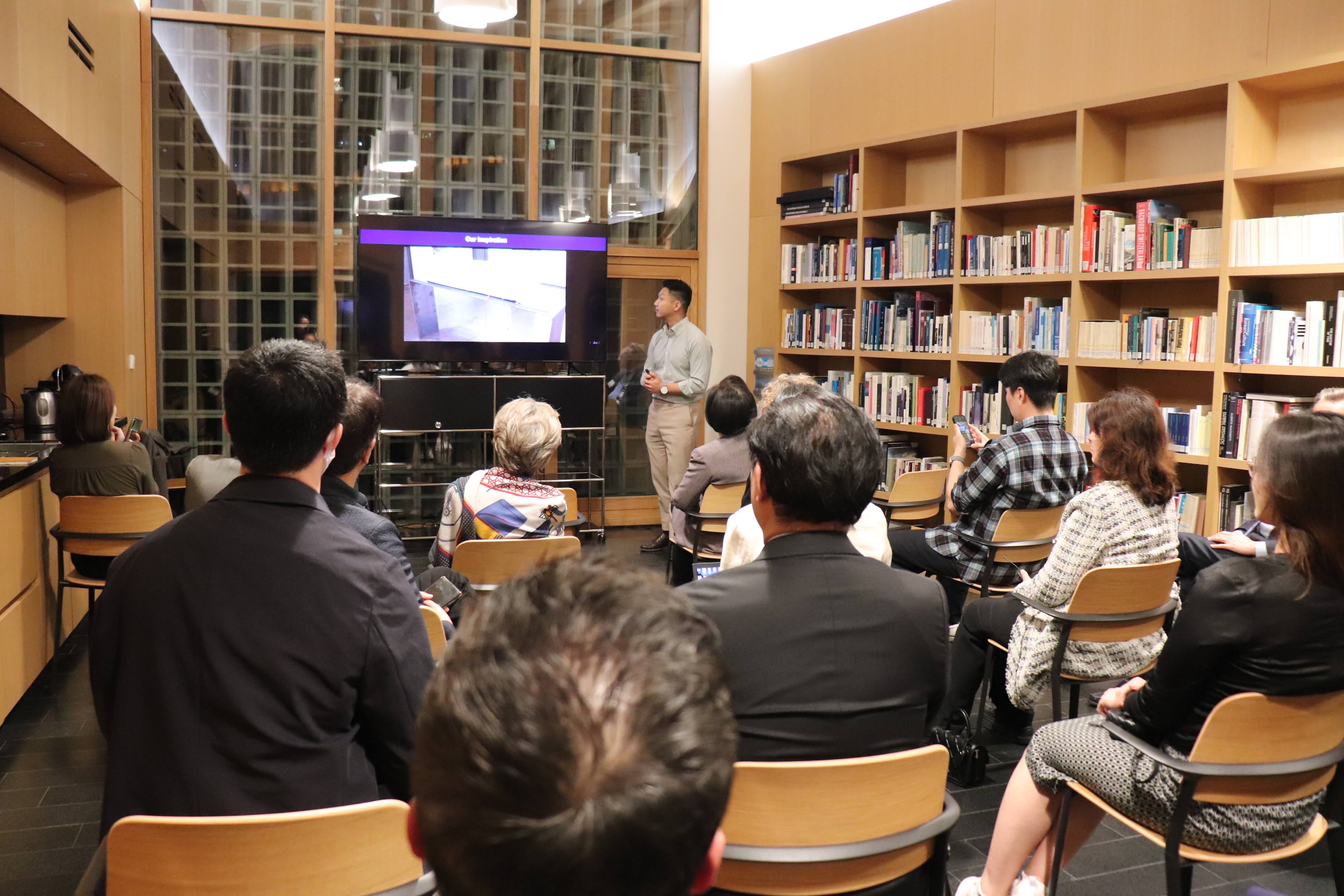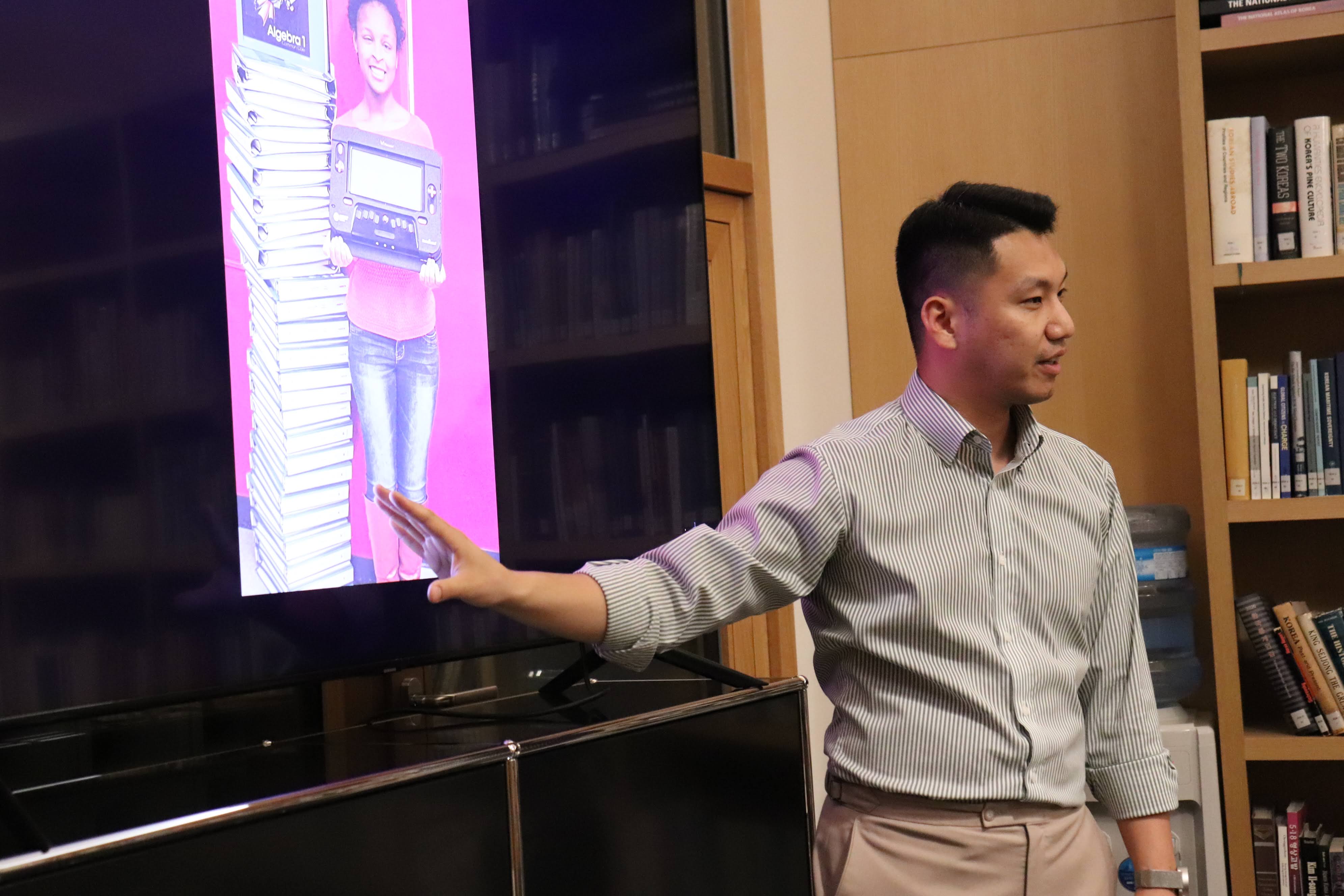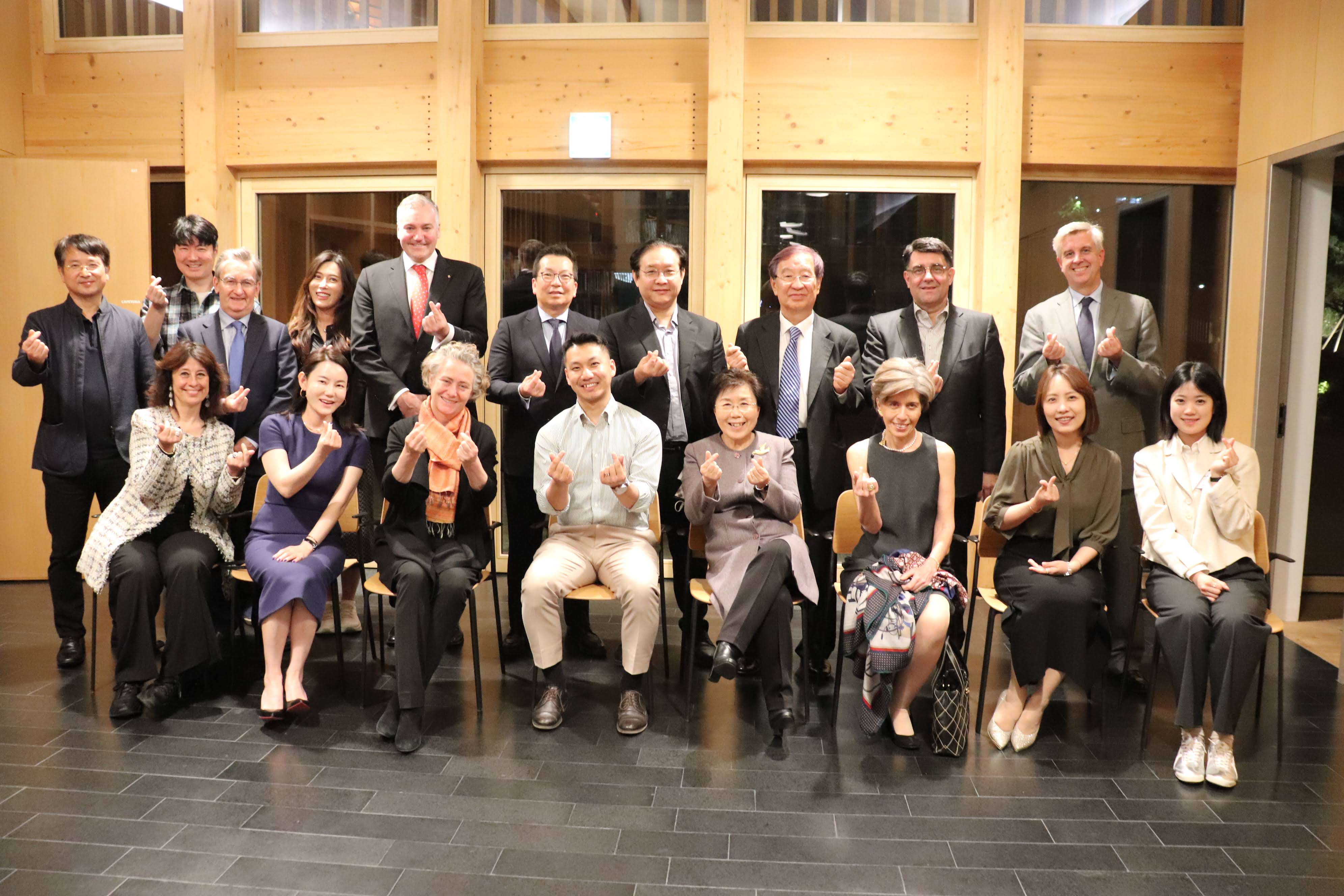
Home > CICI News > What’s New

| Title | Korea CQ - 'The Future of Tactile Communication for the Visually Impaired' Special Lecture by Ki-Kwang Sung, CEO of Dot | ||||
|---|---|---|---|---|---|
| Posted by | webmaster | Hit | 609 | Date | 2023.04.28 |
Dear Korea CQ members,
On April 25, we held a special lecture on 'The
Future of Tactile Communication for the Visually Impaired' at the Swiss Ambassador's residence. The Swiss Ambassador warmly welcomed everyone and had a great time chatting with them. The residence of the Embassy of Switzerland in
Korea is known as the Swiss Hanok. In 2012, the embassy held a global open architectural
competition to build the residence, and the project code name was Swiss
Hanok, which is where the name came from. We were given a tour of the Swiss Embassy residence,
which is not only beautiful in appearance but also eco-friendly in its very
existence, by the Ambassador.
The evening was filled with laughter over a
set meal and wine prepared by the Ambassador.
Before the meal, we listened to the chef
explain the menu.
The meal started with seared scallops with
eggplant caviar, trout roe, and pickled seaweed, Grilled beef with carrot puree, roasted
asparagus, and mustard sauce, baked goat cheese biscuits with onion jam, and finally, for dessert, a raspberry dacquoise
entremets with orange fritters. After the meal, Dot's CEO, Ki-Kwang Sung, gave
a special lecture on "The Future of Tactile Communication for the Visually
Impaired. Mr. Sung won the Best Technology Innovation
Award in 2023 at CES, the world's largest consumer electronics expo held
annually by the US Consumer Technology Association, as well as the ICT
Innovation Grand Prize in Korea, and has won many awards in overseas
competitions such as the UK, France, Germany, and Japan.
We would like to thank Mr. Sung for his
informative lecture and Ambassador Dagmar Schmidt Tartagli for hosting the
meeting for our members. We would also like to thank our members for taking time
out of their busy schedules to attend the meeting and Crystal Park for her
interpretation help.
For more photos, please click the link below.
https://photos.app.goo.gl/mWkjt6D8FCmWiVf18
Making the world accessible Dot by dot (Future
of tactile communication for the visually impaired) Ki Kwang Sung, CEO of
Dot "Making the world accessible Dot by
Dot." In other words, with the vision of making the world more accessible
by connecting dots, Dot is leading the way in developing and distributing
Braille pads for the visually impaired, which is estimated to be around 285
million people in the world today, with its unique technology.
CEO Sung was inspired to develop technology
for the visually impaired nine years ago when he went to church with a friend
and was shocked to see her carrying a Braille Bible. Converting one Bible to
Braille would make a total of 22 books, bulky and impossible to carry. To
reduce this inconvenience, a device that converts line by line into Braille was
developed, but at a price of $5,000, it was not only inaccessible but also
ineffective due to its limited scope of use. For people with visual impairments, even
explaining the simplest of chemical symbols becomes complicated. The question
of how to convey information efficiently and effectively to the visually
impaired led them to develop Dot Pixel, which creates digital braille in real
time and displays it on a tactile monitor, allowing the user to touch the
monitor with their fingers to understand the content. The technology was
completed a year ago and has been changing the history of blind people around
the world through collaboration with various organizations and companies. It
was also recognized for improving the quality of life of the visually impaired in
various areas and won the Best Innovation Award at CES 2023. Dot has made a difference in the lives of
blind people in four areas: education, rehabilitation, workplace, and finally,
public spaces. For education, they are working with the U.S. Department of
Education to provide dot pads for the visually impaired in the field of STEAM,
where it has been difficult for the visually impaired to receive education due
to the abundance of chemical symbols, math formulas, and graphs. The second area is rehabilitation, where the
visually impaired often rely on canes or guide dogs because it's difficult for
them to maintain their sense of direction when moving around and their mobility
is severely limited. However, with a device that reminds them of their
direction and location in real time, they can enjoy freedom of movement. Dot is
also collaborating with rehabilitation programs for veterans in the U.S. who
have acquired vision loss as a result of their service. The third is the work environment, where
people with visual impairments have very limited career options, so they are
limited to telephone work and such, but with the Dot Pad, they can access MS
programs such as Excel, which allows them to work in a variety of professions.
Dot is currently collaborating with Microsoft to create a program that can read
various materials by touch and sound, and also collaborating with Apple to
develop technology that can read posts on social media for education, work, and
more. Among the people who have used the Dot Pad are Stevie Wonder and Andrea
Botticelli, both of whom have given very positive and gratifying feedback on
the technology that Dot has developed, and Stevie Wonder said that he's signed
millions of autographs in his life, but it was the first time he'd ever seen
his own autograph.
Lastly, Dot is working on public spaces, and
looking beyond just the concept of public spaces to make them accessible and
convenient not only for the visually impaired, but also for people with limited
mobility and the hearing impaired. Braille signage, which is commonly found in
public spaces, is often almost useless because changes are not reflected
immediately, but Dot has installed dot kiosks at the Yeouido Irum Center,
Gangnam Sports and Culture Center, Gangnam Health Center, Busan Subway, and the
National Palace Museum to make our services more accessible to all people with
disabilities. Dot pads have been breaking down information
barriers faced by the visually impaired, but their high price is a barrier to
entry. The price of a dot pad is equivalent to $6000 per unit when purchased by
an individual through retail. "We definitely want to do B2C," said
Dot CEO Sung Ki Kwang. "Our goal is to reduce the price below $1000, and
later we will try to reduce the cost so that it can be affordable for individual
consumers." |
|||||












